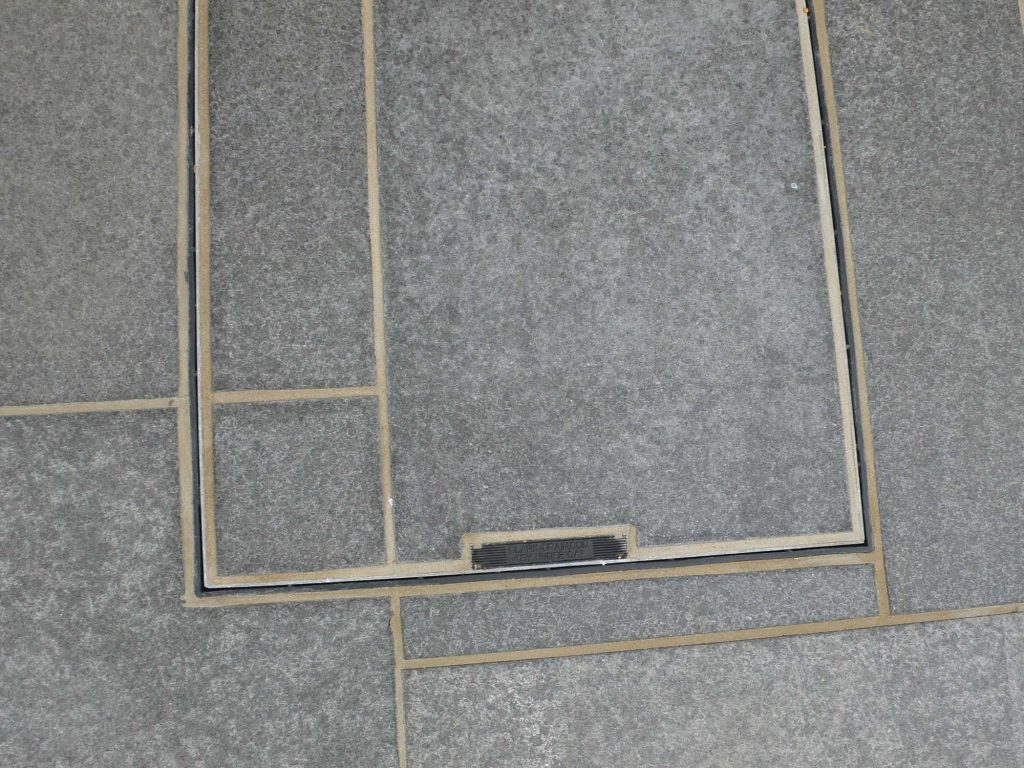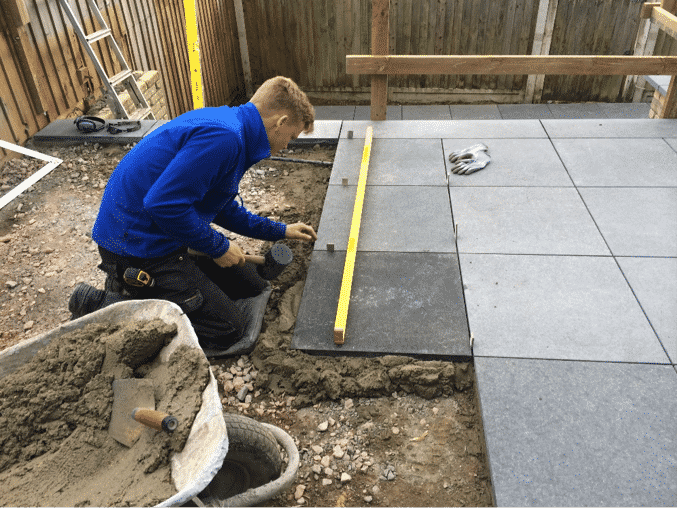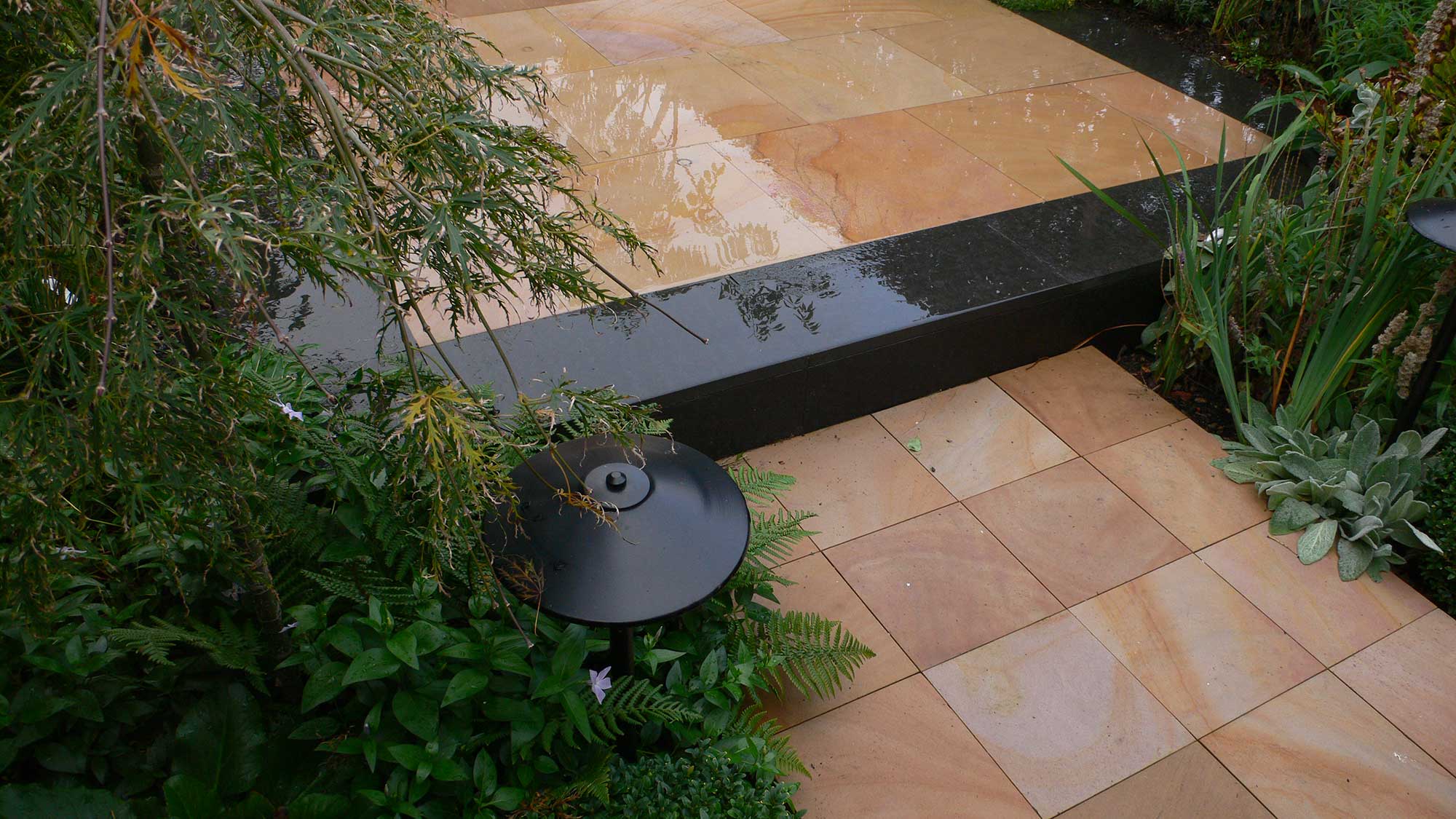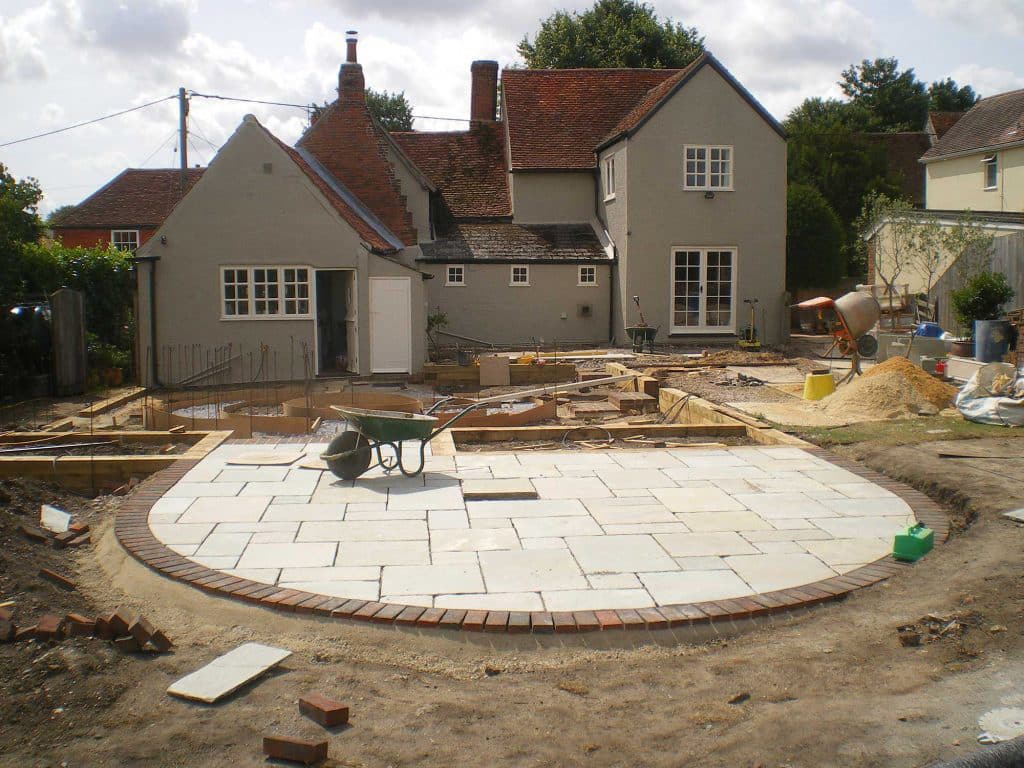09 Jul How to make a patio
In this article, Paul Baker, an experienced landscaper explains how to make a patio that will be beautiful, safe and durable for the foreseeable future.
- Choose the position and size of your patio carefully
- Think carefully about size and proportions
- Think very hard about materials wisely
- Will you need steps or a balustrade?
- Plan any lighting before you start work
- Levels must be compatible with damp courses for adjacent buildings
- Ensure that your patio will be properly drained
- Get the base layers right
- Use the right construction materials
- Lay slabs accurately – being very precise about joint widths
- For the very best results invest in professional help
Where would you like your patio to be?
The first thing I ask anyone planning a new patio is “how would you like to use your garden?” In some ways it seems logical to have the main patio beside an entrance. However, if that space is shaded, overlooked or right next to the wheelie bin, I can almost guarantee that no matter how lovely the patio is – it won’t be used.
Most of our clients want to be eating al-fresco, entertaining or enjoying their morning coffee outside. In which case it makes sense to have the main part of the patio somewhere nice and sunny. That might mean expanding the project to make a small paved area by the door and then laying a path to connect it to a larger, sunnier patio.
This patio in a back garden near Tiptree, Essex is a little away from the house to get the full benefit of the sunshine.
If you look closely you’ll see how we’ve played with the ground levels to work with the fact that the house is built on a slight slope.
I always advise people to make sure their patio has at least enough room for a table, chairs and a barbecue. Don’t forget to leave room to manoeuvre around the furniture. Then, if possible leave space for some decorative planters, a sun lounger and/or play space.
You may not need a large patio right now, but it’s sensible to futureproof your investment. Think ahead, will the way you use your garden change in the future? Perhaps you will want to move house and hope that a “ready made” garden will help sell the property.
How do you want your patio to look?
The choice for patio materials is huge. You could go for natural stone slabs, stone setts (like cobbles), brickweave, porcelain pavers, big slabs, small slabs, rectangular slabs, square slabs, light colours, dark colours, mixed colours, wood effect, or a mixture of several different materials.
I would advise anyone to visit real life gardens rather than garden centres to look for inspiration. It’s hard to imagine a finished patio when all you can see is 4 slabs.
Click here for suggestions for gardens to visit in Essex and Suffolk.
Another way to seek ideas is to hire a landscaper or a garden designer who can produce computer visuals that show you different design solutions. Tapestry Design Studios in Colchester have just the right software.

Don’t forget to think about lighting, balustrades and, if needs be, steps.
Practical considerations
I could show you a video of how to make a patio but it would only be accurate for that one patio. Every paved area needs careful planning with regards to the engineering that will ensure that it’s durable and usable.
If you are paving your front garden, you may need planning permission for impermeable surfaces. Always check local bylaws before buying materials.
Your new patio should not cause damp problems in any adjacent structures. So check where the damp proof course sits and use that to set your levels.
Drainage is crucial and the technicalities vary between different sites and different paving materials. The last thing you need is for your patio to send gallons of water sloshing into your shed every time it rains. The secret lies in understanding the soil and getting the levels right. There are always some groundworks involved. It may involve a garden spade and a wheelbarrow, or you may need to hire a minidigger.
On a similar subject – do you know where the underground utilities are on your site. Are there any sewer pipes, gas mains or electrical cables to consider? And what about manhole covers? Will you leave them visible or are you able to cut pavers to disguise them?

No more ugly iron manhole covers! A skilled landscaper knows just how to make a patio so that manhole covers are accessible but virtually invisible.
The basis of any long lasting landscaping project is to have suitably strong foundations. Pavers laid onto a poorly constructed base will move and become distorted as the soil beneath them compacts and changes with the weather. That leads to uneven surfaces (dangerous!) and cracked slabs (ugly).
Research your sub-base to the last letter. Different soil types, slopes, usage and indeed slabs require very different buildups. For example, a garden patio with beautiful porcelain pavers that will only ever be used by people will need very different construction techniques to front garden that doubles as a driveway and parking space.

Laying slabs accurately
There’s a real skill in laying pavers accurately without crushing your fingers or hurting your back. I’ve laid a lot of patios in my time, lost several fingernails and been truly grateful for steel toecapped boots. Age and experience has helped me to get my eye in, but it’s not as easy as those YouTubers make it look.
At the risk of sounding obsessive, very few things irritate me more than uneven joints between pavers. If you decide on an 8 mm gap, it needs to be 8mm through the whole project. Not somewhere between 5mm and 10mm. Even if the slabs are differing shapes and sizes, wibbly joints really can ruin the whole visual effect.
The best way to make a patio
All things considered, if you want to make a patio, there’s a lot to be said for investing in the services of an experienced landscape professional. Even though it’s outdoors, your garden is part of your property and has a big influence on your quality of life. A trained landscaper knows how to make a patio that looks great, is fit for purpose, and will probably also add value to your home. And all you need to do is agree on the design and the price, then sit back while someone else does the hard work.
Is it expensive to hire a landscaper?
Garden inspiration: patios, paths and decking
Tell us about your patio ideas and get a quote for your project





Sorry, the comment form is closed at this time.